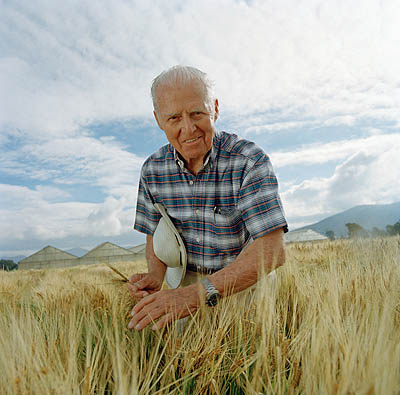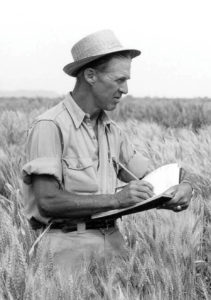Texas A&M AgriLife celebrates the Borlaug legacy
Remembering Norman Borlaug’s Nobel Peace Prize and impact on global food security
Few researchers and teachers have impacted farmers, agriculture and food security globally more than Norman Borlaug, Ph.D. While many hands and minds play a part in ensuring people have food on their tables, Borlaug stands out as a “food hero” who brought sustenance and nourishment to those most in need.

Texas A&M AgriLife celebrates Borlaug, who is often referred to as the “Father of the Green Revolution,” on the anniversary of his receiving the Nobel Prize on Dec. 10, 1970, for his lifelong work toward food production globally.
Borlaug was a Distinguished Professor of International Agriculture in the Texas A&M College of Agriculture and Life Sciences and the namesake of The Norman Borlaug Institute for International Agriculture and Development at Texas A&M University.
Through dedicated research during the 1960s, Borlaug perfected a dwarf wheat variety that was both resilient and prolific. This groundbreaking work and the planting of this wheat in food-insecure parts of the globe was instrumental in saving over a billion lives worldwide.
Celebrating Borlaug’s excellence
In addition to the Nobel Peace Prize, Borlaug was awarded a U.S. Presidential Medal of Freedom and the U.S. Congressional Gold Medal for his revolutionary humanitarian efforts that paved the way for improved food productivity.
Determined to make a difference, he could be found working in the fields alongside farmers, students, interns and researchers. By developing improved grain varieties, he was able to fulfill his life’s mission and help farmers around the globe feed more of the world’s population.
His legacy of “seeding” agricultural production all over the world still resonates today, as the Borlaug Institute implements programs in developing countries worldwide.
Embracing his spirit, the institute follows the seven elements of the Borlaug legacy: prevent conflict by addressing poverty and hunger; employ agriculture science to address poverty and hunger; take it to the farmer; engage in an interdisciplinary approach; encourage effective governance and sound policies; promote youth development; and act more and talk less.
Continuing the legacy

Fighting hunger and poverty together and fulfilling Borlaug’s legacy, the Borlaug Institute is bringing more food to the world by utilizing applied research and training programs from production to consumption in small-holder agricultural communities of the developing world.
The institute engages experts from a variety of fields beyond crop and animal production, including environmental sustainability, food safety, nutrition, education, entrepreneurship and public policy.
“We engage producers, small-holder farmers, in a value-chain approach, helping them identify and then improve production of specific agricultural products for which there is a market,” said Elsa Murano, Ph.D., director of The Borlaug Institute.
“It could be horticulture crops that are of high value, such as coffee or peppers, or it could be livestock and livestock-derived products,” Murano said. “We then provide them with demonstrations and training on how to do it efficiently, sustainably and with climate-smart strategies that help them cope with extreme conditions, such as droughts.”
Murano said this focused approach helps elevate people out of poverty and hunger and has generational cascading effects on families and communities.
“Their improved livelihoods allow them to buy medicines for the family and send their kids to school,” she said. “It really provides them with hope and an opportunity for a better future, and that all begins with agriculture.”
Murano said Borlaug was a great believer in action.
“He was all about getting things done,” Murano said. “’Act more, talk less’ was his motto and the Borlaug Institute has taken that to heart. So, through perseverance and action, we continue his legacy.”





